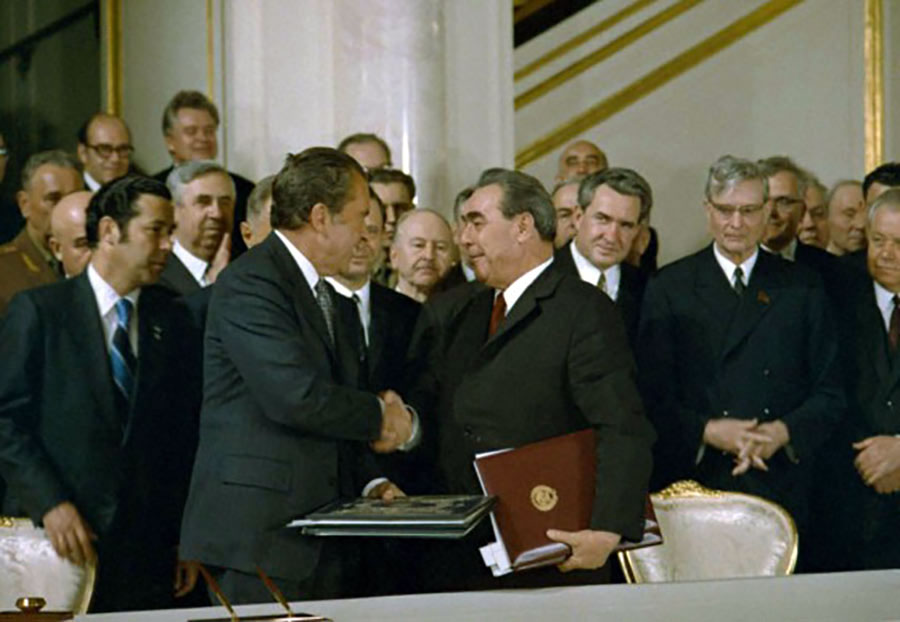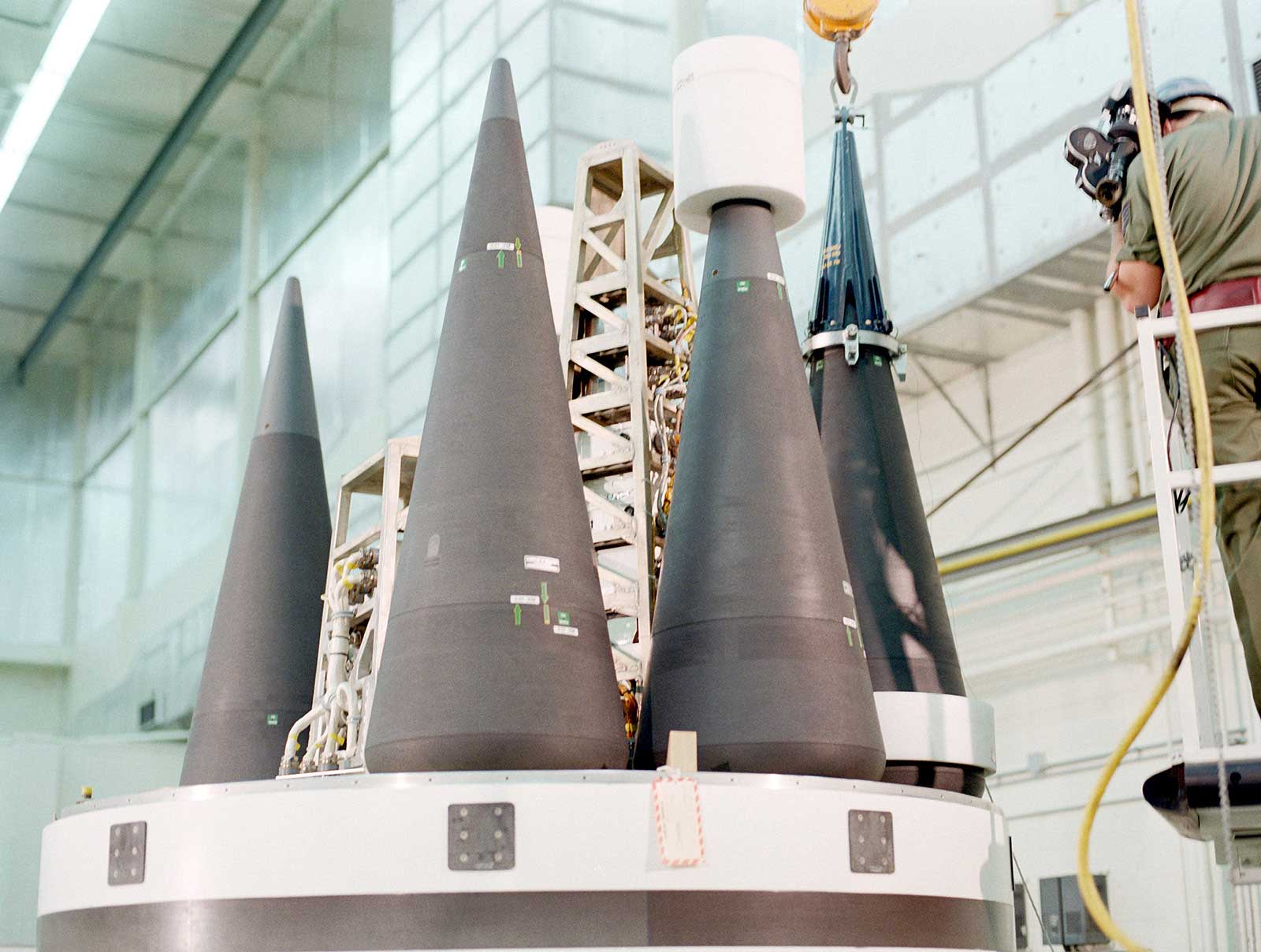Easing The Tensions
Both sides understood the inherited dangers of continuing to stand on the brink of nuclear holocaust. By 1969, the superpowers were, spending more than $50 million a day between them on nuclear weapons. It was a burden both sides were finding intolerable. One of the first steps back was the Strategic Arms Limitation Talks (SALT), which began in November 1969. These talks were slow and cautious in their development. An era of relaxation of strained relations or tensions, or détente, had begun.

Finally in May 1972, President Nixon and Soviet Premier Brezhnev signed the SALT I treaty in Moscow. The most important parts of the agreement were the Treaty on Anti-Ballistic Missile (ABM) Systems and the Interim Agreement and Protocol on Limitation of Strategic Offensive Weapons. The Interim Agreement froze each side's number of ICBMs and submarine-launched ballistic missiles (SLBMs) at current levels for five years, pending negotiation of a more detailed SALT II. The ABM Treaty limited each side to two ABM sites, one protecting the national capital, the other a long-range missile site. After years of hostility, the Soviet Union and the United States had agreed to curb spiraling arms-race costs and reduce the risk of nuclear war.
However, this treaty did not address the recent technological advances of placing more than one warhead on a single missile. This technology, known as multiple independently targetable re-entry vehicle, or MIRV, allowed for military planners to produce greater damage for the same total yield and also reduce the effectiveness of an anti-ballistic missile system. But by not directly addressing the issue of MIRV warheads, a loophole was left for the arms race to continue. Over the next decade, Russia and America would add 12,000 nuclear warheads to their arsenals.

In an attempt to resolve the issue of MIRVed weapons, talks continued. President Ford and Premier Brezhnev signed the Vladivostok Accord in November 1974 that limited each side to 2,400 delivery vehicles, of which 1,320 could be MIRVed.